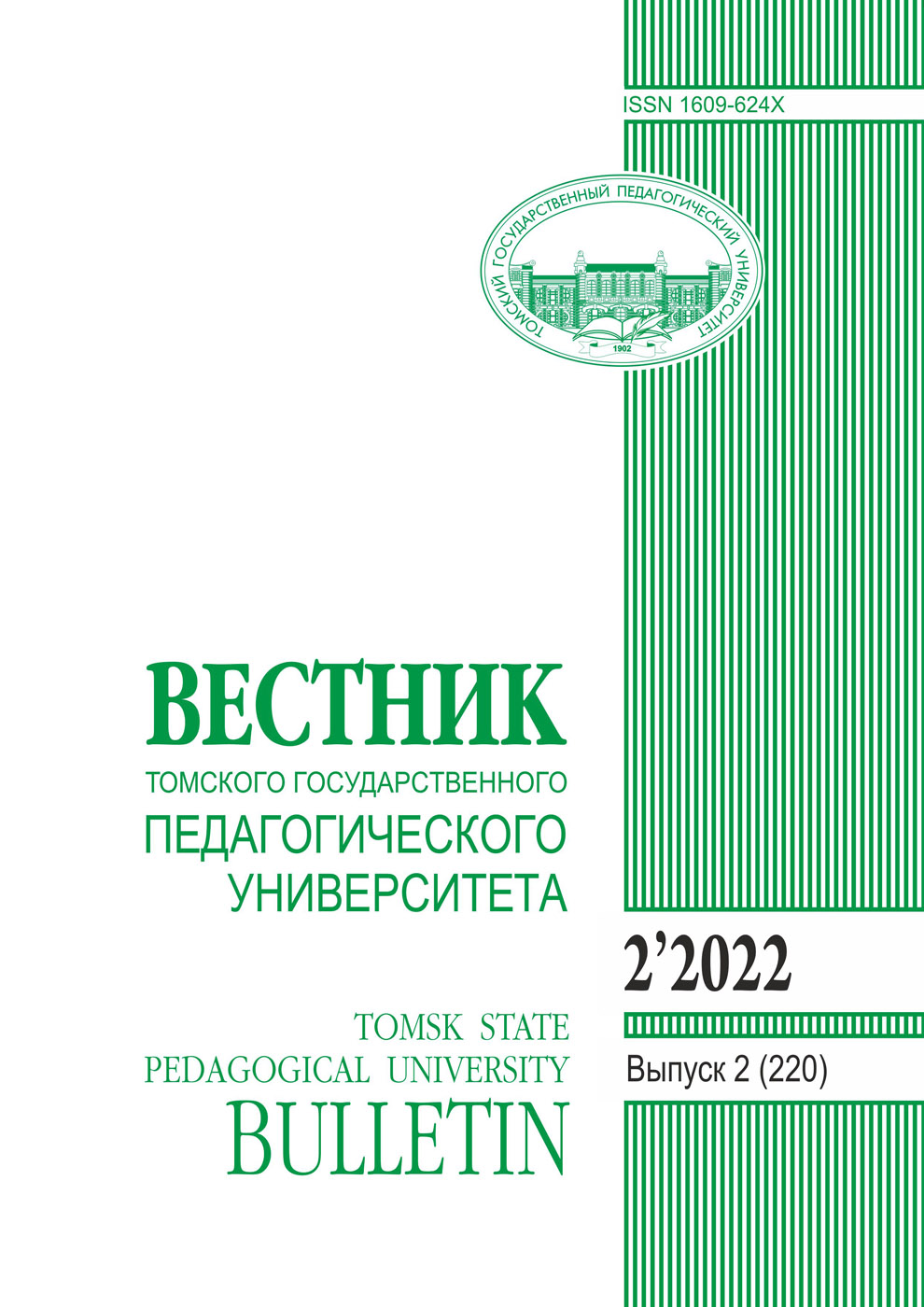SEMIOTIC WORLDS. PLANTS
DOI: 10.23951/2312-7899-2023-3-159-181
The ecological conception of a new dialogue between man and nature is ripening. This concept is biosemiotics. According to the concept, nature is perceived as an equal actor of the coevolution of humankind and the living creatures on our planet. The idea of the research is to use biosemiotics – a pre-linguistic level of semiotics, semantic processes which happened in the living sphere – as a tool or conceptual framework for describing biological phenomena at all levels of life organization. The relevance of the concept can be driven by the unstable relationship between culture and nature, and can be used to initiate safe cultural forms and practices between the different worlds of living. Biosemiotics understands life as the existence and interaction of living communities, where signs are created, interpreted in different ways and have meaning. Basic semiotics covers almost all living forms on the tree of life. Meaningful behavior has been documented even in unicellular organisms. We cannot but view plants from the same perspective, as there have been a lot of discoveries in plant biology. The author takes plants interaction and communication as of individual organisms, as they construct their own ontological worlds. New data of plant signaling and behavior have revealed that plants have their own sensory-motor apparatus: higher plants with a vascular system have the functional cycle, i.e. a sensory-motor loop mediated by electrical impulses; and plant studies of their cognitive skills and behavior have found that plants not only passively adapt to the environment, but also actively transform and construct it, i.e. create an umwelt. Thus, the author sets a question of the existence of semiosis between plants. Through the lens of a biosemiotic approach, she describes an example of a symbiotic interaction of American polyculture: maze, pumpkin, and beans. This approach is supplemented by the concept of 4E (embedded, extended, enactive, and embodied) cognition, with the addition of the fifth E – ecological, which reveals plants’ affordances, namely, entanglement of affordances of the environment with the morphological affordances of any plant and the possibility to use these affordances for their own needs. The author made an attempt to integrate the concept of enlogue (by Segei Chebanov) into the phytosemiotic approach. Enlogue is a tool for communication with another. It is a link between living organisms, as well as between a living organism and a non-living thing. This link or connection is always reversed. Enlogues (two or more) are involved in the formation of a sign. Mutual links, or enlogues, create an umwelt. The research highlights the importance of a further development of the biosemiotic approach as well as the need for the development of a new descriptional language. As an additional issue for further examinations is a question: How can we properly describe non-human phenomena in human language? And what is “properly” in that case?
Keywords: biosemiotics, phytosemiotics, umwelt, function circle, affordance, sign, enlogue, semiotic fitting, ontological worlds, biological need, enactivism, 4E-cognition
References:
Anderson, M., Deely, J., Krampen, M., Ransdell, J., Sebeok, T. H., & Uexküll, T. V. (1984). A Semiotic Perspective on the Sciences: Steps toward a New Paradigm. Semiotica, 44, 7–47.
Bais, H. P. (2015). Shedding light on kin recognition response in plants. New Phytologist, 205(1), 4–6. https://doi.org/10.1111/nph.13155
Borisov, E. V., Ladov, V. A., Melik-Gaykazyan, I. V., Nayman, E. A., Surovtsev, V. A., & Yur’ev, R. A. (2019). Problemy sovremennoy filosofii yazyka [Problems of modern philosophy of language]. Tomsk State University. (In Russian).
Calvo, P., Sahi, V. P., & Trewavas, A. (2017). Are plants sentient? Plant Cell Environ, 40(11), 2858–2869. https://doi.org/10.1111/pce.13065
Chebanov, S. V. (1998). Hermeneutic aspects of enlogue as quasi-personal interaction. In A. S. Gerd (Ed.), Structural and applied linguistics (vol. 5, pp. 19–27). Saint Petersburg University Press. (In Russian).
Chebanov, S. V. (2021). Biosemiotics. Lecture 1. YouTube channel bioherm. www.youtube.com/watch?v=NtN4yfAq7pU&list=PL3EiudK8zwFpgiacKhtlVb3CZJiS_LFly&index=41 (In Russian).
Crepy, M. A., & Casal, J. J. (2015). Photoreceptor-mediated kin recognition in plants. New Phytologist, 205, 329–338
Darwin, C. (1880). The Power of Movement in Plants. John Murray, Albemarle Street.
Deng, Q., Hui, D., Wang, J., Yu, C.-L., Li, C., Reddy, K. C., Dennis, S. (2016). Assessing the impacts of tillage and fertilization management on nitrous oxide emissions in a cornfield using the DNDC model. Journal of Geophysical Research: Biogeosciences, 121(2), 337–349. https://doi.org/10.1002/2015jg003239
Dexter, J. P., Prabakaran, S., & Gunawardena, J. (2019). A Complex Hierarchy of Avoidance Behaviors in a Single-Cell Eukaryote. Current Biology, 29, 4323–4329. https://doi.org/10.1016/j.cub.2019.10.059
Fromm, J., & Lautner, S. (2012). Generation, Transmission, and Physiological Effects of Electrical Signals in Plants. In A. Volkov (Ed.), Plant Electrophysiology (pp. 207–232). Springer. https://doi.org/10.1007/978-3-642-29110-4_8
Gagliano, M., Renton, M., Depczynski, M., & Mancuso, S. (2014). Experience teaches plants to learn faster and forget slower in environments where it matters. Oecologia, 175, 63–72. https://doi.org/10.1007/s00442-013-2873-7
Gentry, H. (1969). Origin of the Common Bean, Phaseolus vulgaris. Economic Botany, 23(1), 55–69.
Hart, J. P. (2008). Evolving the Three Sisters: The Changing Histories of Maize, Bean, and Squash in New York and the Greater Northeast. In John P. Hart (Ed.), Current Northeast Paleoethnobotany II (pp. 87–99). The University of the State of New York. https://www.researchgate.net/profile/John-Hart-24/publication/216819974_Evolving_the_Three_Sisters_The_Changing_Histories_of_Maize_Bean_and_Squash_in_New_York_and_the_Greater_Northeast/links/5d993412299bf1c363fb2dab/Evolving-the-Three-Sisters-The-Changing-Histories-of-Maize-Bean-and-Squash-in-New-York-and-the-Greater-Northeast.pdf
Jablonka, E., & Lamb, M. J. (1998). Epigenetic inheritance in evolution. Journal of Evolutionary Biology, 11(2). 159–183. doi:10.1046/j.1420-9101.1998.11020159.x
Khattar, J., Calvo, P., Vandebroek, I., Pandolfi, C., & Dahdouh-Guebas, F. (2022). Understanding interdisciplinary perspectives of plant intelligence: Is it a matter of science, language, or subjectivity? Journal of Ethnobiology and Ethnomedicine, 18(1). https://doi.org/10.1186/s13002-022-00539-3
Knyazeva, H. N. (2015). Jacob von Uexkühl’s concept of “Umwelt” and its significance for modern epistemology. Voprosy filosofii, 5, 30–44. (In Russian).
Kull, K. (2000). An introduction to phytosemiotics: Semiotic botany and vegetative sign systems. Sign Systems Studies, 28, 326–350.
Kull, K. (2016). The Biosemiotic Concept of the Species. Biosemiotics, 9, 61–71. doi:10.1007/s12304-016-9259-2
Kull, K. (2018). On the Logic of Animal Umwelten: The Animal Subjective Present and Zoosemiotics of Choice and Learning. In G. Marrone, & D. Mangano (Eds.), Semiotics of Animals in Culture: Zoosemiotics 2.0 (pp. 135–148). Springer Verlag.
Kull, K. (2020). Semiotic Fitting and the Nativeness of Community. Biosemiotics, 13, 9–19.
Kull, K. (2022). The aim of extended synthesis is to include semiosis. Theoretical Biology Forum, 115(1/2), 119–132. doi.org/10.19272/202211402008
Mancuso, S. (2019). Plant Revolution. Eksmo. (In Russian).
Melik-Gaykazyan, I. V. (1997). Informatsionnye protsessy i real’nost’ [Information processes and reality]. Fizmatlit. (In Russian).
Melik-Gaykazyan, I. V. (2022). Semiotic diagnostics of the trajectory splitting between a dream of the past and dream of the future. Istoriya, 13:4(114). https://doi.org/10.18254/S207987840021199-7 2022 (In Russian).
Munafò, M. R., Nosek, B. A., Bishop, D., Button, K., Chambers, C., Percie du Sert, N., Simonsohn, U., Wagenmakers, E., Ware, J. J., & Ioannidis, J. (2017). A manifesto for reproducible science. Nature Human Behaviour, 1, Article 0021. doi:10.1038/s41562-016-0021
Murphy, D. J. (2007). People, Plants and Genes. Oxford University Press.
Novoplansky, A. (2019). What plant roots know? Seminars in Cell and Developmental Biology, 92, 126–133
Postma, J. A., & Lynch, J. P. (2012). Complementarity in root architecture for nutrient uptake in ancient maize/bean and maize/bean/squash polycultures. Annals of Botany, 110(2), 521–534 https://doi.org/10.1093/aob/mcs082
Segundo-Ortin, M., & Calvo, P. (2021). Consciousness and cognition in plants. WIREs Cognitive Sciences, 13(13). doi:10.1002/wcs.1578
Simard, S. (2021). Finding the mother tree. Discovering the Wisdom of the Forest. Knopf.
Trewavas, A. (2003). Aspects on Plant Intelligence. Annals of Botany, 92, 1–20. doi:10.1093/aob/mcg101
Uexküll, J. von. (1957). A Stroll through the Worlds of Animals and Men. In: Instinctive Behavior: The Development of a Modern Concept (pp. 8–11). International Universities Press.
Uexküll, J. von. (1982). The theory of meaning. Semiotica, 42(1), 25–82
Volkov, A. G., & Markin, V. S. (2012). Phytosensors and Phytoactuators. In A. Volkov (Ed.), Plant Electrophysiology (pp. 173–206). Springer. https://doi.org/10.1007/978-3-642-29110-4_7
Witzany, G. (2006). Plant Communication from Biosemiotic Perspective, Plant Signaling & Behavior, 1(4), 169–178. https://doi.org/10.4161/psb.1.4.3163
Issue: 3, 2023
Series of issue: Issue 3
Rubric: UNIVERSE AND MULTIVERSE
Pages: 159 — 181
Downloads: 341










